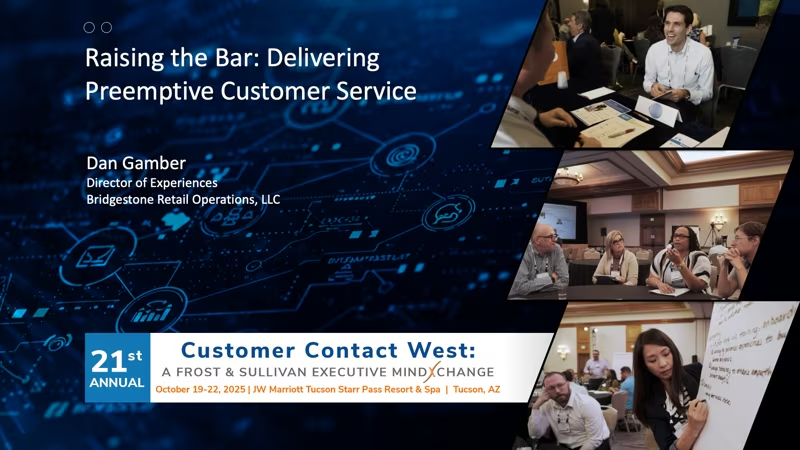With service now the biggest competitive differentiator, it’s no longer enough to provide efficient, or even tailored service. Today’s customers expect an increasing level of personalization and will choose to buy from the brands that are able to offer service fine-tuned to their specific needs. As personalized service becomes the norm, hyper-personalization is the next step. And, industry leaders are already delivering it to achieve new heights of service excellence.
What Exactly Is Hyper-Personalization?
While personalized service often means calling the customer by name and keeping track of preferences, hyper-personalization takes it to a much higher level. It’s now about deciphering and acting upon customer data in real-time. Today’s customers want to engage with brands that can:
- Instantly identify them
- Have immediate access to information about every interaction, on every channel
- Understand their issue and know how to solve it, based on the captured data
Profiling versus Hyper-Personalizing
While hyper-personalized customer service is an emerging trend, many businesses are confusing it with customer profiling. While beneficial in delivering a more relevant experience, profiling is nowhere near as detailed as hyper-personalization. A business that uses profiling can identify customer traits and even offer service based on these traits. Yet, this is far less detailed than using specific customer history and real-time context. Only through a hyper-personalized approach can a business identify the oftentimes subtle nuances and details that profiling doesn’t catch to provide highly targeted and personalized products, services, promotions and content. To make this happen, it requires the ability to merge customer interactions with demographic and historical data to paint a clear, contextual picture.
The Important of Contact Center Architecture
To deliver a hyper-personalized customer experience, the right cloud-based technologies are essential. With customers expecting seamless personalized service across a growing number of digital channels, the first step is embracing an omnichannel strategy. This means deploying cloud applications with powerful database management capabilities that offer:
- Contextual relevant data
- 24/7/365 availability
- Real-time access
- Distributed across teams anywhere in the world
- Scalability
Because customers often are using multiple channels, with sometimes more than one being used at a time, the applications must be able to support the customer journey wherever it may go with current context in real-time, enabling customer interactions to be adapted and optimized. Contextual data also needs to be captured and analyzed throughout the entire customer journey during each interaction to deliver the hyper-personalized experience that customers expect. With access to “right now” customer data and the ability to map out customer journeys in real-time, interactions can be instantly optimized for the customer.
Why Don’t All Businesses Provide Hyper-Personalized Experiences?
Traditional mom and pop retailers have long understood the power of hyper-personalization. As part of a community, business success meant knowing each customer and continuously being closely attuned to customer needs.
In today’s modern, digital marketplace, hyper-personalization requires modern infrastructure that supports both digital and voice channels. Interestingly, most legacy systems do not offer this capability. Thus, many businesses have taken to integrating or patching in applications to support this level of service. Often, the results are less than ideal with siloed channels and missed opportunities.
Because hyper-personalization is an art and a science, it requires both a strategy and the right technology. The first step is choosing a customer experience platform that breaks down silos and supports omnichannel journeys.
Making the Shift to Hyper-Personalization
Transitioning to offering hyper-personalized service is never a simple task, even for a business that’s ready to rip and replace legacy infrastructure with new technology that captures customer data in real-time and supports omnichannel journeys. An important part of making the shift requires an entirely new approach that empowers frontline agents to utilize data in new ways.
- Greater Critical Thinking – While agent scripts still offer some value, they cannot be relied on as they once were. Businesses can benefit from enabling agents to use data, as well as creativity, empathy and logic to deliver experiences that are satisfying and memorable to customers.
- More First Call Resolutions – Time-strapped customers value their time and have little tolerance for having to repeat their issue. With a hyper-personalized approach, there is a much greater chance of providing a first-call resolution.
- Data-Driven Value-Added Services – With the additional data and context, agents are in a unique position to proactively offer ancillary services, suggestions or features that enable customers to gain greater value or satisfaction from their purchase.
- New Ways to Measure and Manage Agent Performance – Traditional measurements of agent performance may not be relevant with the ability to offer hyper-personalized service. Instead of simply counting the number of calls answered or calculating the duration of each call, measurements, such as how well an agent delivers a relevant customer experience, may be more relevant to overall performance.
With the rising number of communication channels and self-service interactions than ever before, customers are increasingly expecting personalization at every point of their journey. The businesses able to offer this level of service will be the ones that will be the next generation of customer service leaders.



